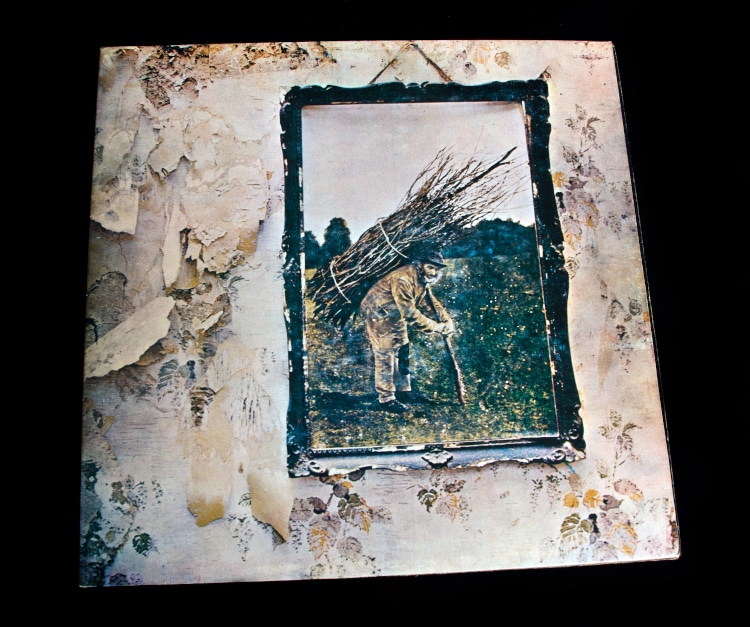
Photo: bertys30/Depositphotos
Upon its release in 1971, Led Zeppelin’s untitled fourth studio album known as Led Zeppelin IV, became an instant classic. While it is one of the most popular rock albums of all time, its cover art was long shrouded in mystery. Featuring a framed portrait of a man hanging on a decaying wallpapered wall, it is often seen in record stores, on t-shirts, and music magazine write-ups. However, not much was known about the evocative piece that illustrates the cover, until now.
Brian Edwards, a historian at the University of the West of England, was browsing auction house news releases when came across an original copy of the image. By sheer luck, Edwards spotted the famed picture in a Victorian photo album. A long-time fan of the band, the historian recognized the image immediately. “Led Zeppelin created the soundtrack that has accompanied me since my teenage years, so I really hope the discovery of this Victorian photograph pleases and entertains Robert [Plant], Jimmy [Page], and John Paul [Jones],” said Edwards.
During the album production, Led Zeppelin’s vocalist Robert Plant bought a picture of an old man carrying a bundle of sticks on his back in an antique shop in Reading, Berkshire. Originally thought to be an oil painting due to its unique colors, the famed image has turned out to be a black and white photograph that dates back to the 19th century. The mystery man in the portrait is Lot Long (or Longyear), a 69-year-old roof thatcher born in the town of Mere, Wiltshire, in 1823. When the image was taken in 1892, he was a widower who lived in a small cottage.
The now iconic image was taken by Ernest Howard Farmer, considered a pioneer in the development of photography as an art form in late 19th-century Britain. The photo album containing the image is noted: “Reminiscences of a visit to Shaftesbury. Whitsuntide 1892. A present to Auntie from Ernest.” It features writing that matches that of the photographer. The album also includes images of local architecture, street scenes, and portraits of other rural workers.
After making the discovery, Edwards reached out to the Wiltshire Museum, which acquired the album for £420 (about $515). In celebration, the museum will hold a special exhibition, titled The Wiltshire Thatcher – a Photographic Journey through Victorian Wessex, featuring images of the album next year.
“We will show how Farmer captured the spirit of people, villages, and landscapes of Wiltshire and Dorset that were so much of a contrast to his life in London,” says the museum in a statement. And while the whereabouts of the original image bought by Plant are unknown, this discovery has reignited both the interest of Farmer’s work and the legacy of Led Zeppelin. The museum adds, “It is fascinating to see how this theme of rural and urban contrasts was developed by Led Zeppelin and became the focus for this iconic album cover 70 years later.”
The man on the cover of Led Zeppelin IV has finally been identified. The discovery was made by Brian Edwards, who spotted an original copy of the image in a Victorian photo album.
Ver esta publicación en Instagram
The name of the man on the cover was Lot Long, and the image was taken by photographer Ernest Howard Farmer.
Ver esta publicación en Instagram
Wiltshire Museum: Website | Instagram
h/t: [Smithsonian Magazine]
Related Articles:
Sitting Bull’s Great-Grandson Is Identified With New DNA Testing Method
Newly Identified Van Gogh Drawing Goes on Display for First Time Ever
Listen to The Beatles’ Newly Released Final Song ’Now and Then’
